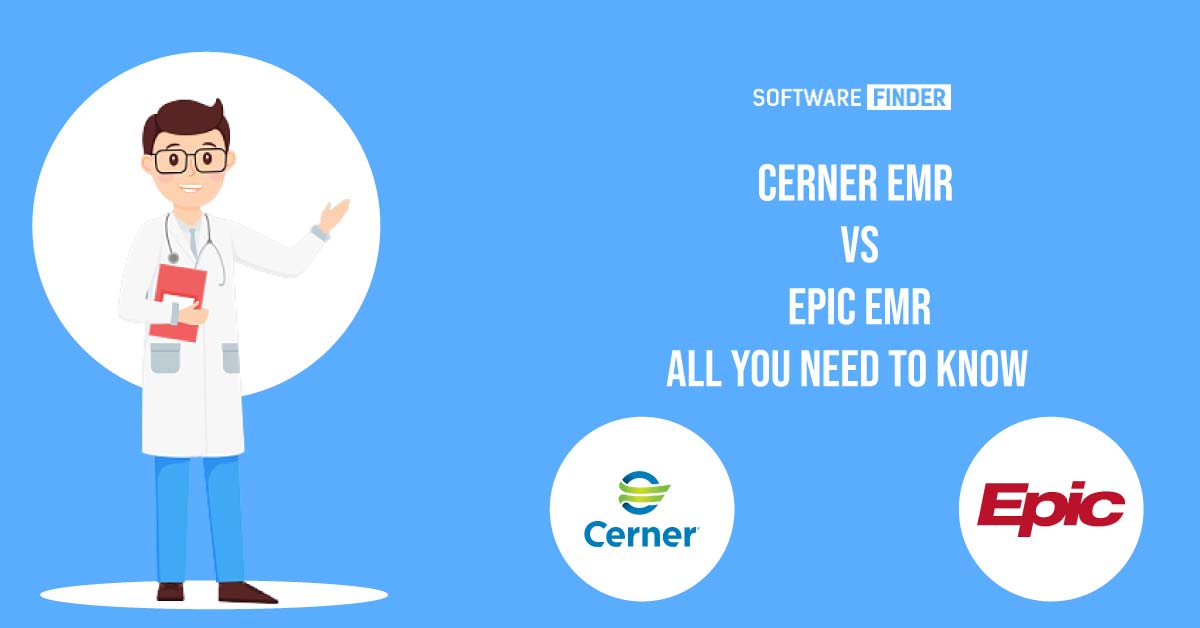Cerner EMR -An overview
Health companies of all kinds and specialties use Cerner, a cloud-based EHR program, to improve their operations and deliver better treatment. Charting, recordkeeping, revenue management, and health analytics are all available. For small- to medium-sized businesses, Cerner is also highly advised. Over 27,000 facilities around the world make use of it.
The Cerner EMR system, also known as the Cerner Millenium, helps you save much time because each feature makes tasks more accessible for you. For instance, the program’s central database enables real-time creation, monitoring, and updating patient medical records.
Its service structure also incorporates imaging solutions for disciplines like radiology, pain management, and cardiology. These aid medical professionals in offering their patients
The main features of Cerner EMR are:
- Quick-Select Charting.
- Detailed Scheduling Dashboard.
- Powerful Integrations.
- Patient Education Resources.
- Patient Portal.
- Dynamic Clinical Documentation Tools.
- Auto-Texting.
Epic EMR – An overview
The cloud-based system Epic handles several things. First, it concerns patient engagement and backing distant care, including multi-specialty hospital organizations, governmental hospitals, and individual practices.
The Epic EMR software enables more than 30 medical professionals to find innovative methods to assist their patients. Among other medical contexts, the application is appropriate for community hospitals, academic medical institutions (teaching hospitals), rehabilitation facilities, and retail clinics. The widespread adoption of Epic EMR allows for the provision of the ‘basic’ EHR features, and practices can add additional modules based on specialty.
Features of Epic EMR
- Appointment Management.
- Billing Management.
- Clinical Workflow.
- Document Management.
- Insurance and Claims.
- Lab Integration.
- Medical Templates.
- Patient Demographics.
Which software has the best and most valuable features? Cerner EMR Vs. Epic EMR
Privately funded EHRs that support quick healthcare resource integration are Cerner and Epic. They help the data exchange and connection of numerous systems.
Cerner provides features for integration and interoperability. It has established three different integrated platforms to deliver the finest integration possible. They offer operational, clinical, and financial data in combination with other external systems.
Organizations may integrate all of their internal systems thanks to the Epic system. For example, it enables its patients to schedule appointments online, obtain prescription refills, examines their test results, and access their data whenever they want by integrating the websites of healthcare companies with their EHR.
Like Cerner, it has created an Ambulatory EMR platform called EpicCare that includes all ten elements of a hospital’s medical data. For large businesses and practices with several locations, EpicCare is the best EHR option.
Hospitals searching for simple, safe, and effective ways to manage electronic medical records can benefit from Epic’s solutions.
Both EHRs function well in nursing because their performance affects how an organization configures them. However, many nurses claim that the hospitals where they work prioritize using Epic.
Hospitals also utilize Cerner for electronic medical records and computerized charting, but most nurses from large hospitals say Epic is far simpler to use. In addition, they can only look up further information because of Cerner. While some other nurses claim that using Cerner is straightforward, Epic is a little more streamlined and efficient. This is because Cerner occasionally makes finding and browsing the pages difficult.
Cost comparison –Cerner EMR Vs. Epic EMR
There is no particular amount that Epic EMR is known to cost because it has yet to disclose its price. However, the news on the market suggests that Epic is relatively more expensive than Cerner. As a result, Healthcare compliance auditing and consulting services may incur additional expenditures on top of those already incurred.
Depending on the functionality available, Epic cloud-based EMR systems may cost as little as $200 per month or as much as $35,000 per month. These expenses cover setup and training; however, some providers might bill separately. As a result, the fees could go to about $2,000, including training expenditures.
For big hospitals and clinics, a self-hosted Epic EMR can range from $1,200 to $500,000. In addition to these costs, you can purchase an Epic EMR for a one-time fee of between $1200 and $500,000. First, examine the guide that assesses the value of Epic.
Cerner’s pricing strategy is undoubtedly more affordable than Epic’s. Cerner PowerChart Ambulatory EHR may therefore start at $25.00 per year in price. Unfortunately, neither a free trial period nor a free version is available for Cerner PowerChart Ambulatory EHR. You cannot use it for a trial if you don’t buy it. An Epic is an expensive option, and Cerner is much less costly. Cerner does not offer a free trial or free version, so you must invest before learning the system.
Which software is simple to install and use? Cerner EMR Vs. Epic EMR
When it comes to seamless workplace integration, Cerner could have a better reputation. Users are given a helpful installation task list that makes completing each step simpler. Good documentation is facilitated by software implementation along these lines. However, Cerner still needs to make significant modifications to its implementation processes.
Like Cerner, Epic needs an excellent track record for implementing projects on time and within budget. As a result, users must spend millions of dollars on the software’s installation, and they frequently overspend. Additionally, the requirement to recruit specialize IT personnel to install Epic raises significant concerns because of the associate cost. However, the procedure is simpler to follow.
